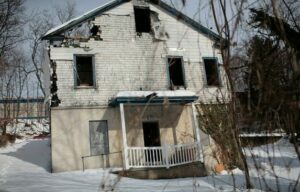The number of zombie foreclosures in the United States has reached its lowest level since 2021, according to a new report from ATTOM Data, a property data provider. The third-quarter 2024 Vacant Property and Zombie Foreclosure Report reveals a significant decline in abandoned homes in foreclosure, reflecting the continued resilience of the U.S. housing market.
As of the third quarter of 2024, approximately 1.4 million residential properties nationwide were vacant, equating to 1.3% or one in 76 homes. This figure is virtually unchanged from the previous quarter, highlighting the stability in the housing market.
The report indicates that 222,934 U.S. residential properties are in the foreclosure process, down 6% from the second quarter of 2024 and nearly 30% from the same period last year. The decline follows a surge in foreclosure activity that occurred after the expiration of a nationwide moratorium on lender actions against delinquent homeowners, which had been in place during the COVID-19 pandemic.
Among these pre-foreclosure properties, about 7,000 are categorized as zombie foreclosures, meaning they have been vacated by their owners. This figure, although slightly higher than the previous quarter, is down more than 20% from a year ago. The report notes that zombie properties represent a mere fraction of the U.S. housing stock, with just one in every 14,800 homes classified as such—a significant improvement from one in 11,565 homes in the third quarter of 2023.
“Zombie foreclosures continue to be a mere blip on the radar screen—one of many measures of the overall strength of the U.S. housing market,” said Rob Barber, CEO of ATTOM. He attributes this trend to historically high levels of home equity, which provide homeowners with an incentive to renegotiate payment plans rather than abandoning their properties.
The housing market, now in its 13th consecutive year of growth, has seen the nationwide median home value rise by 6% year-over-year in the spring of 2024, reaching a new high of $365,000. This sustained growth has contributed to a substantial increase in homeowner equity, with nearly 95% of mortgage holders having built up some equity and half owing less than 50% of their property’s value.]
Zombie foreclosure rates varied across states, with the largest annual decreases observed in Connecticut, Oklahoma, Iowa, North Carolina, and New Mexico—each experiencing drops of over 70%. In contrast, Florida, Texas, and New Jersey saw notable increases in zombie foreclosures.
Overall, the vacancy rate for all residential properties in the U.S. has remained steady at around 1.3% for the past 10 quarters. States with the highest vacancy rates include Oklahoma, Kansas, Missouri, Alabama, and West Virginia, while New Hampshire, Vermont, New Jersey, Idaho, and Utah reported the lowest rates.
The report also highlights key trends in metropolitan areas, with Peoria, Illinois, and Cedar Rapids, Iowa, recording the highest zombie foreclosure rates. Meanwhile, investor-owned homes and bank-owned properties exhibited varying levels of vacancy, with states like Kansas and Indiana showing the highest rates.
Despite these fluctuations, the overall trend in zombie foreclosures suggests that the issue remains well-contained, reflecting the broader health of the U.S. housing market.








